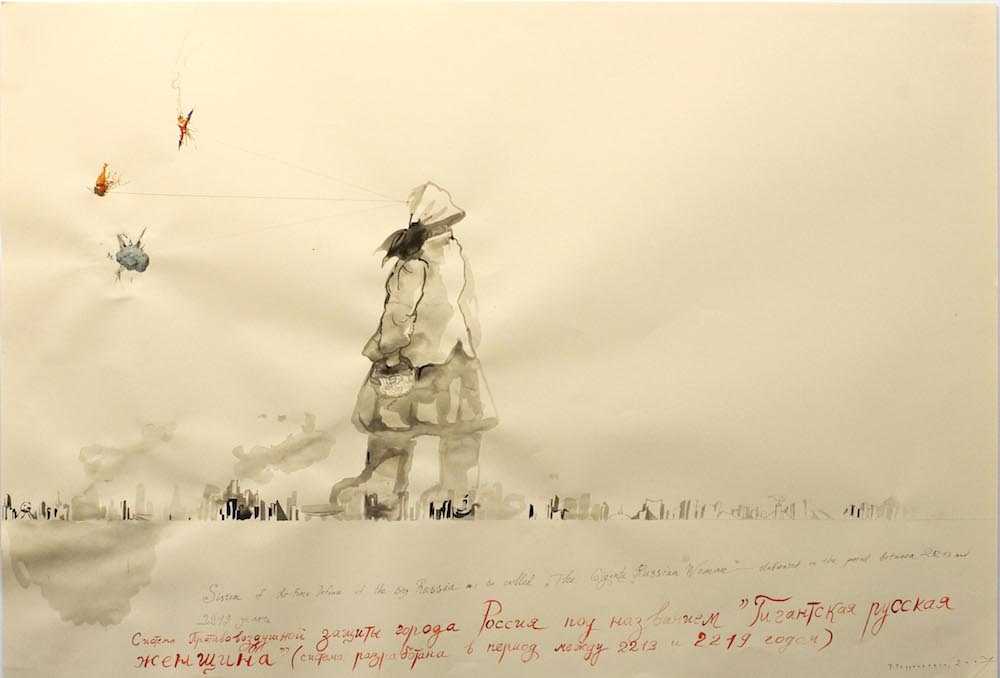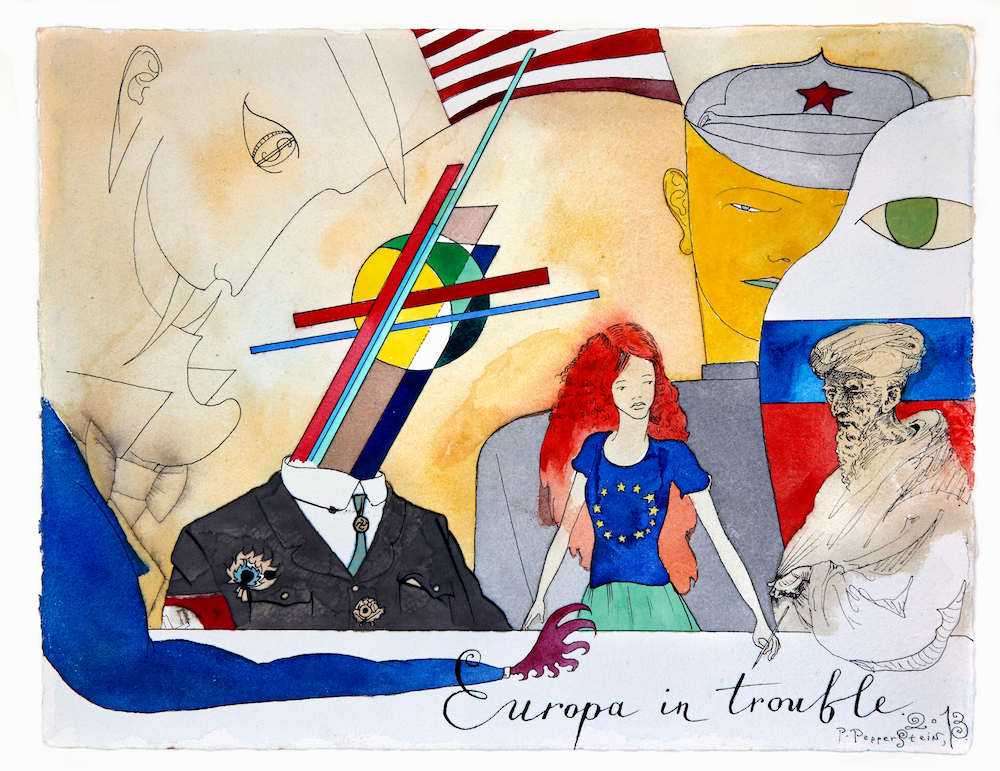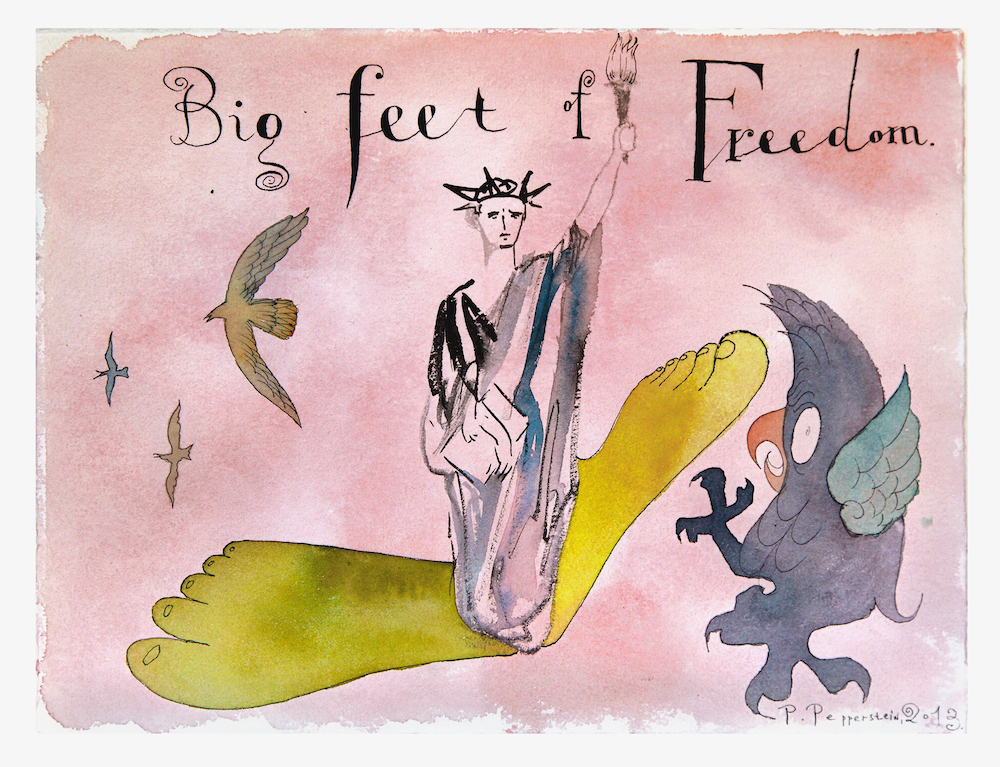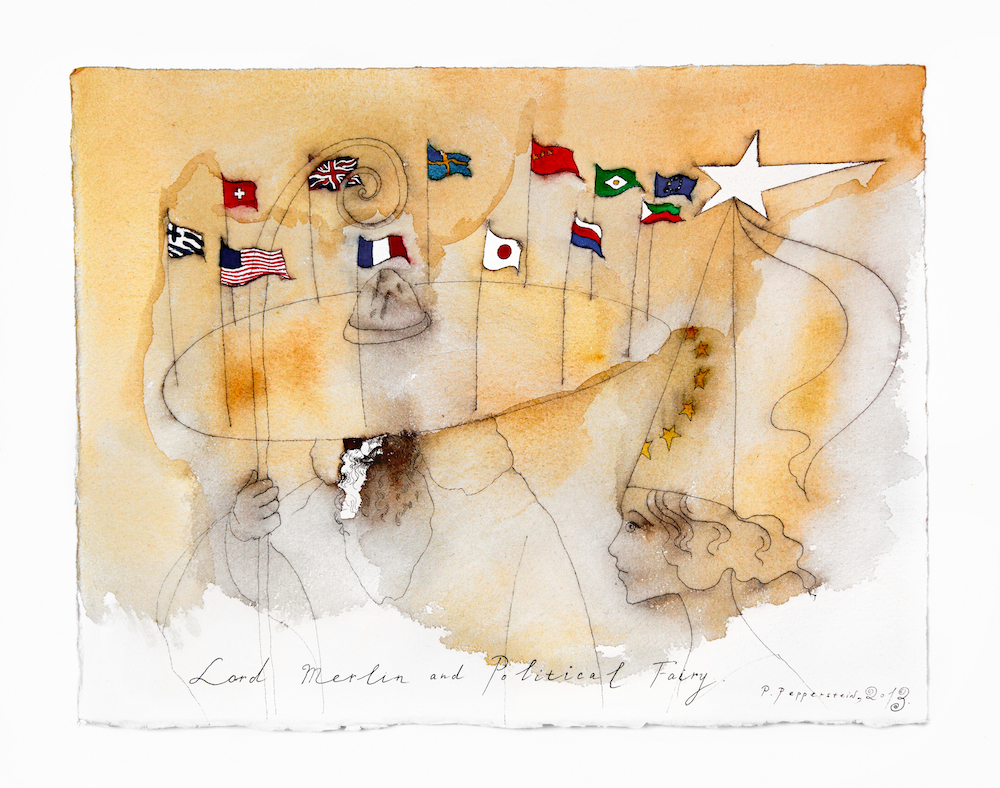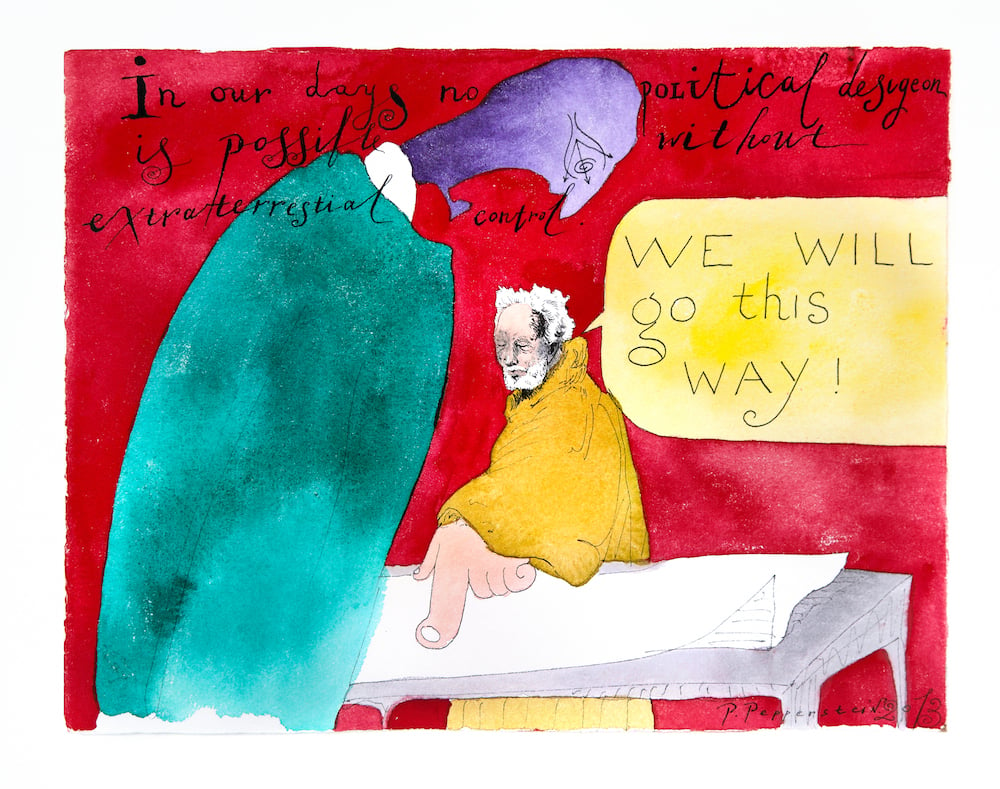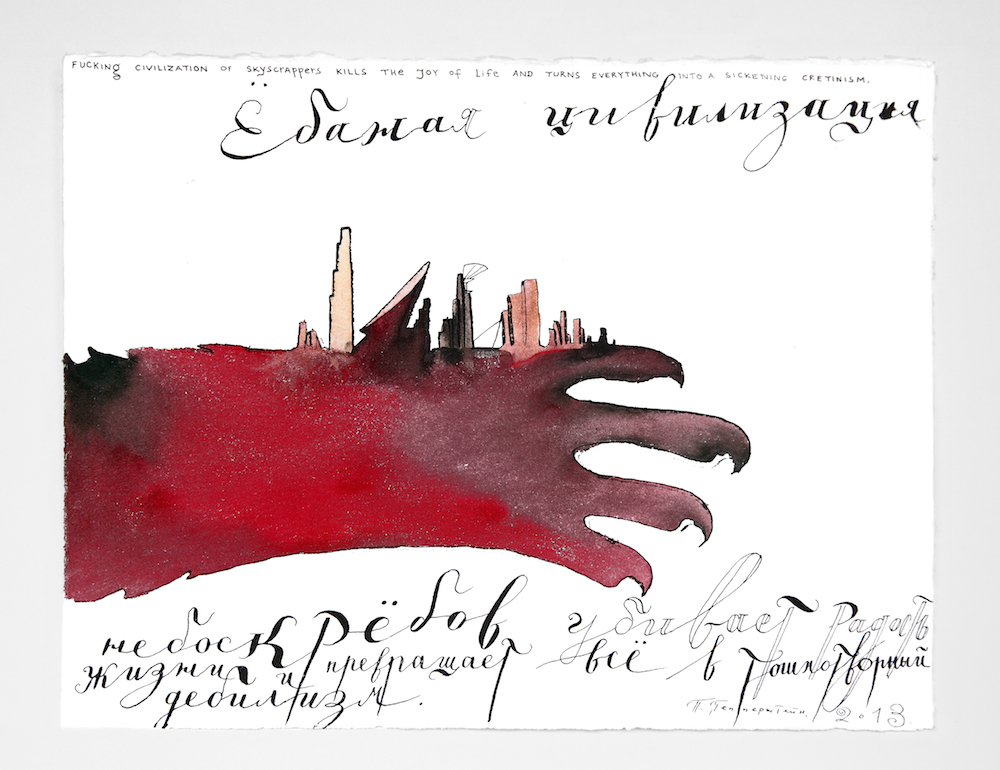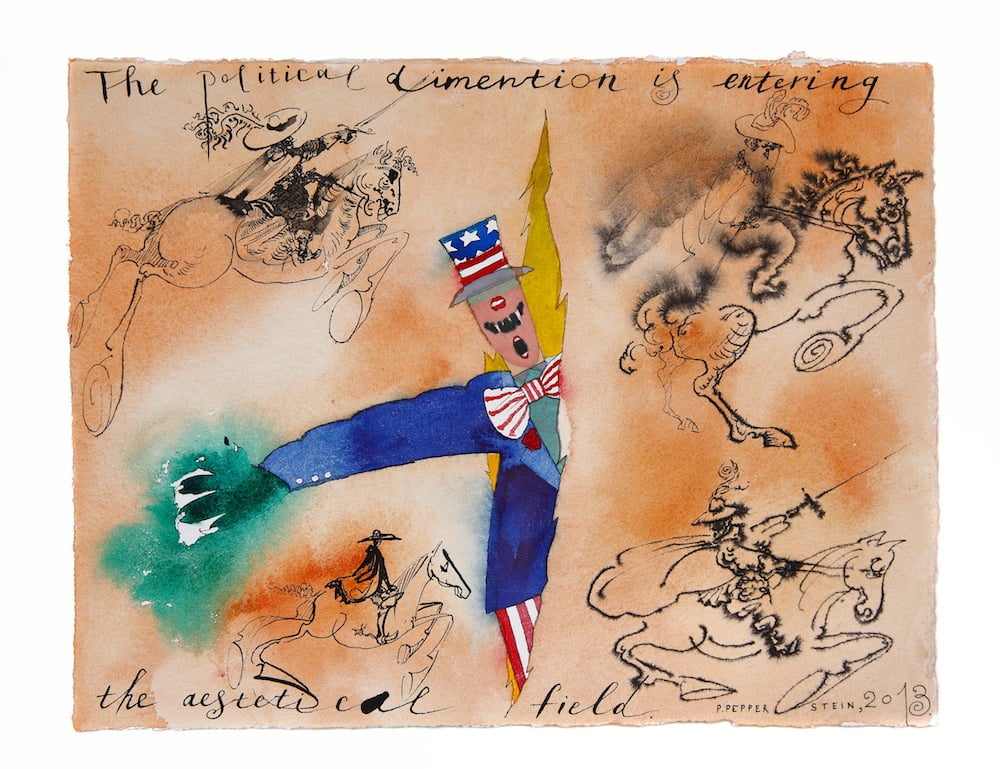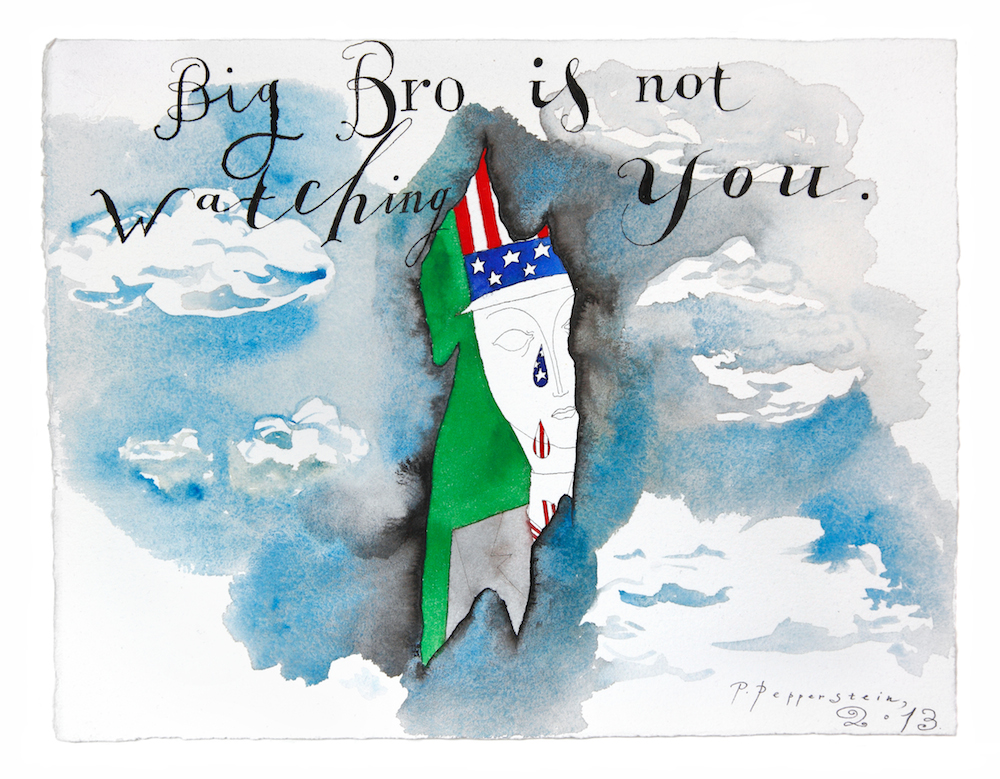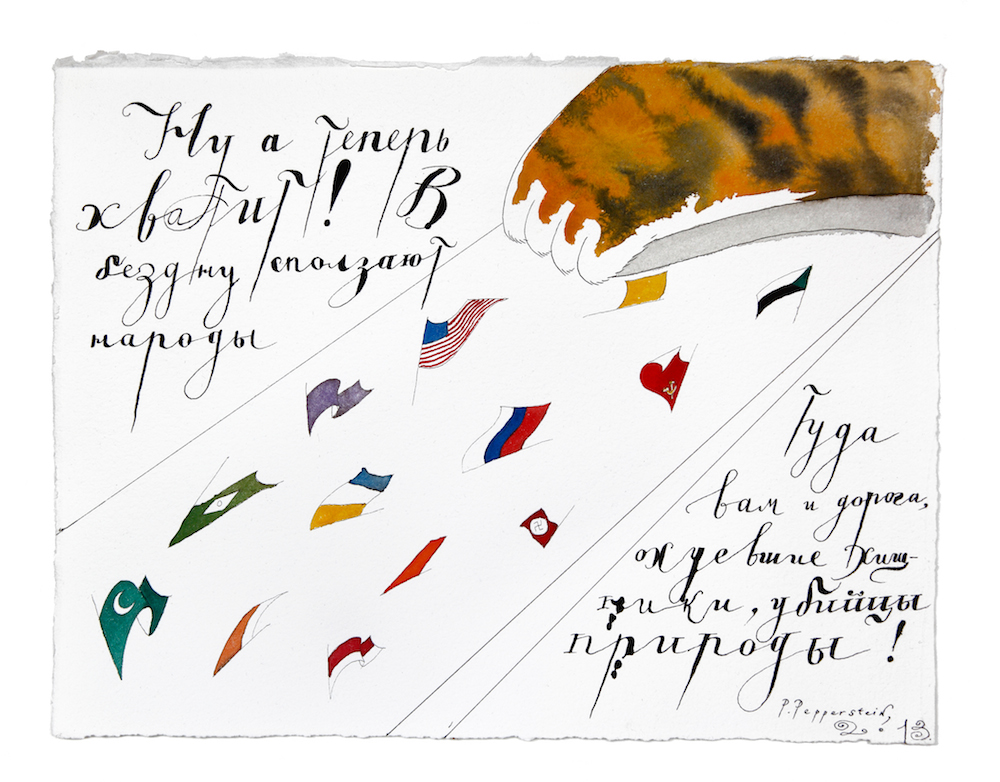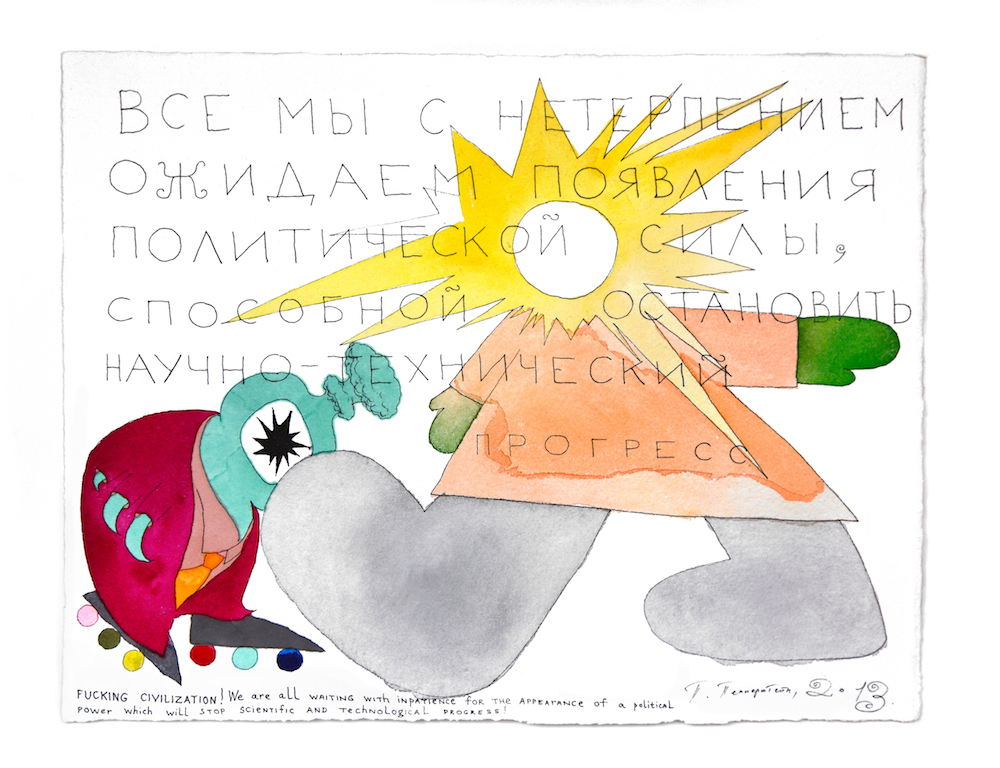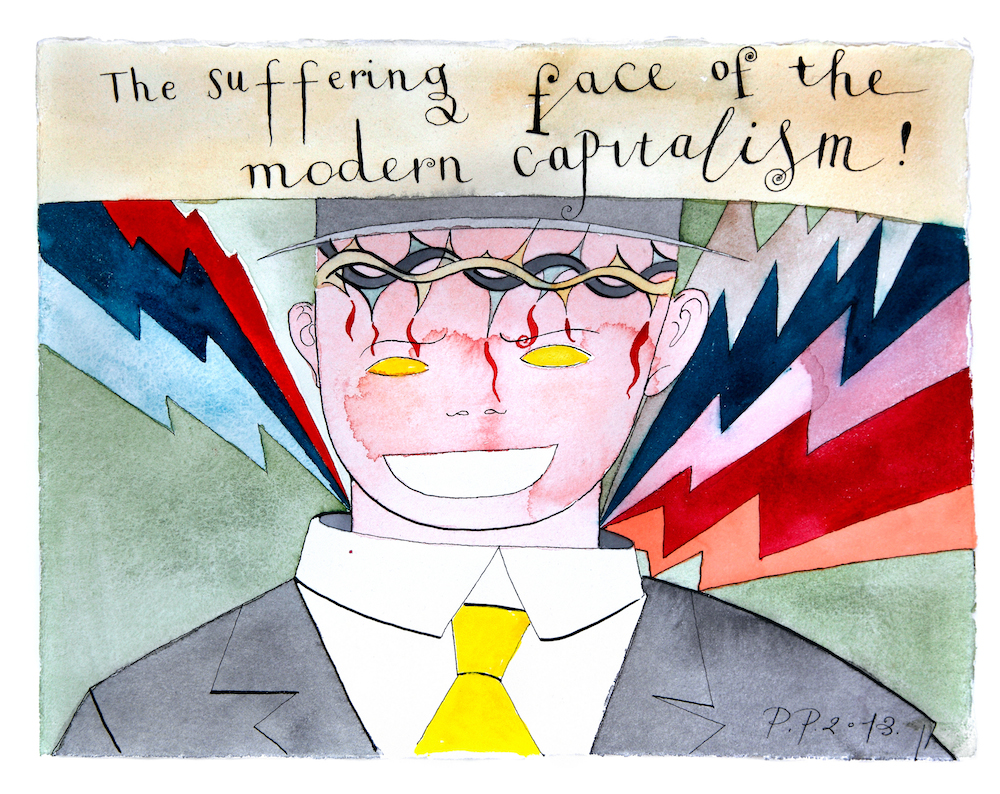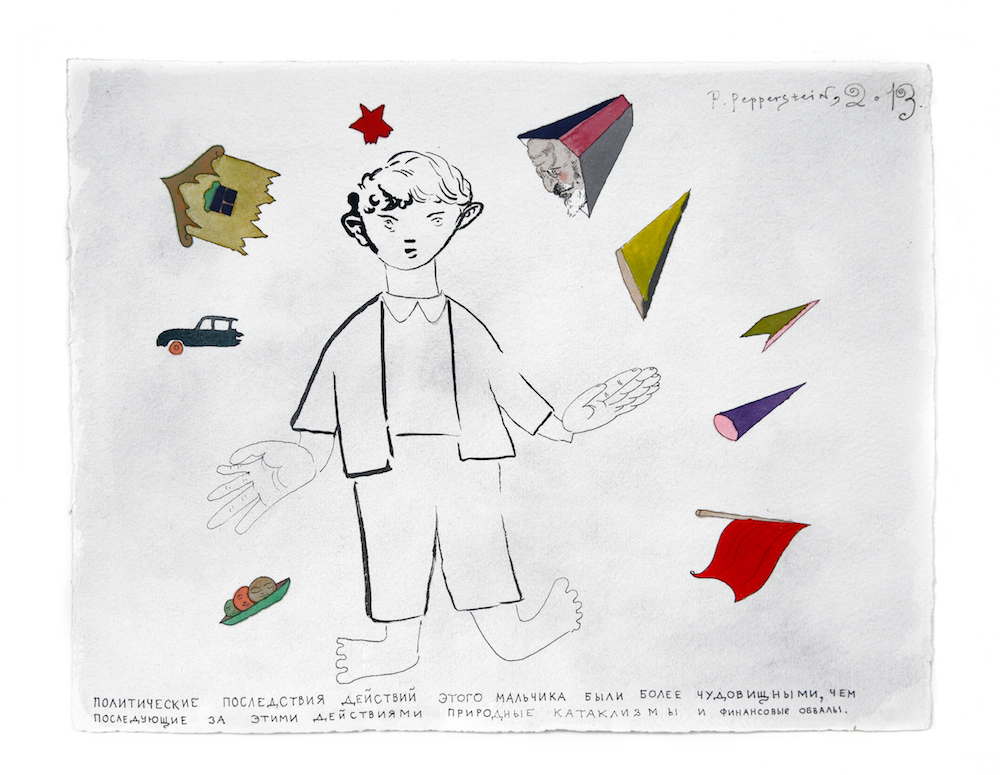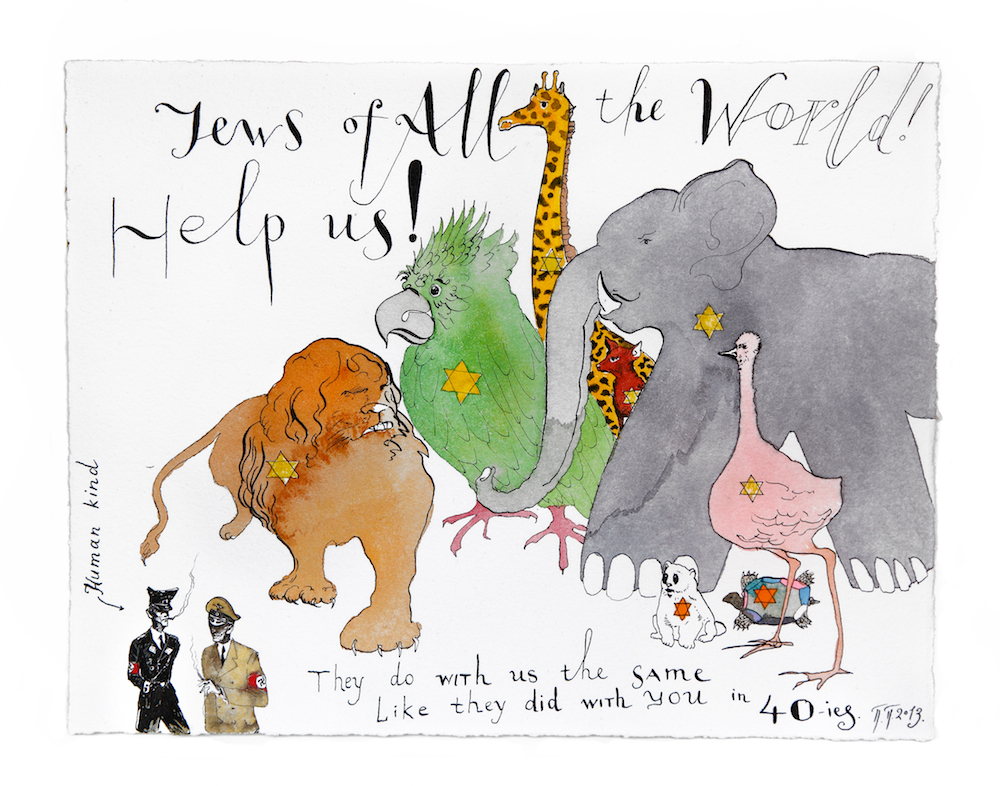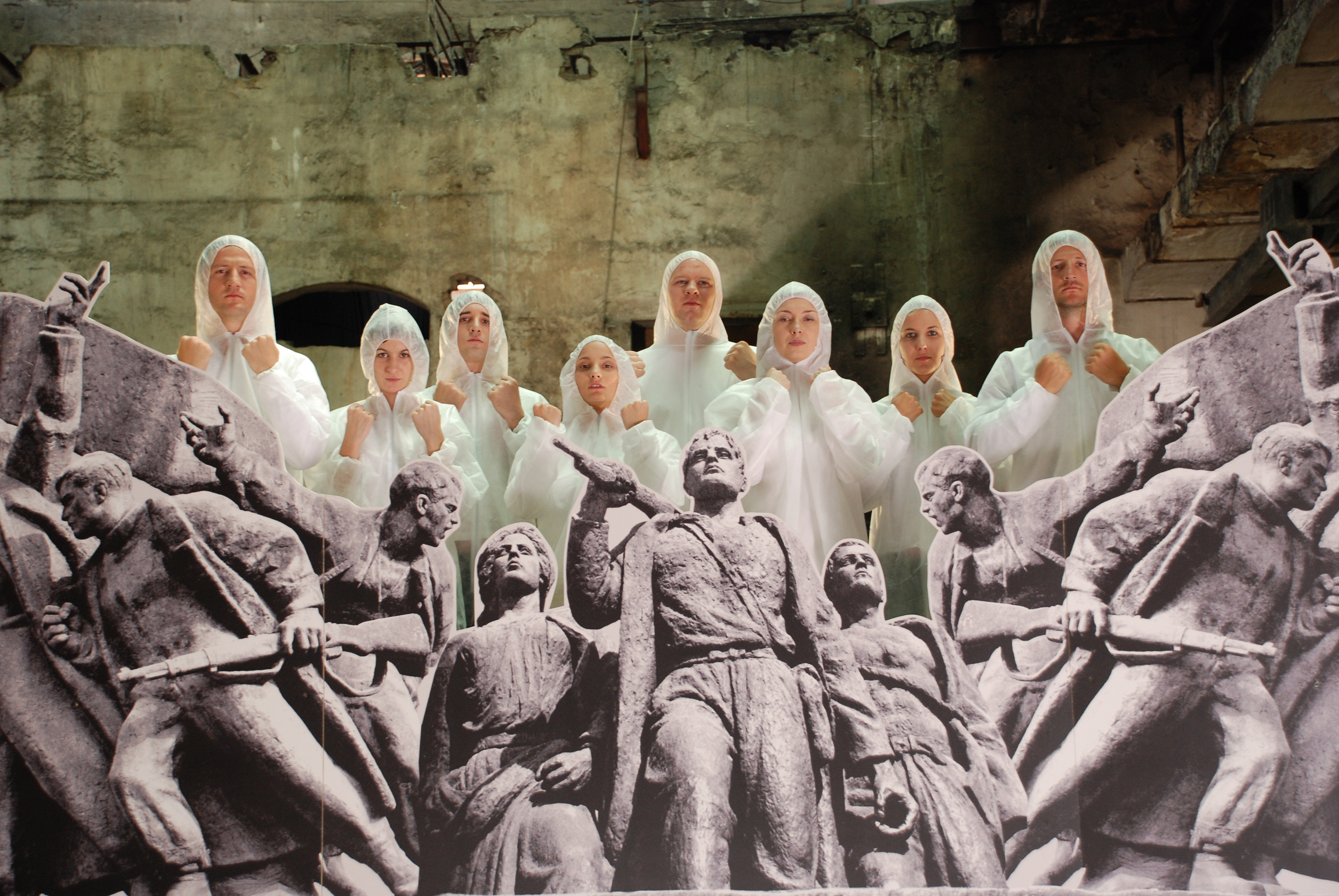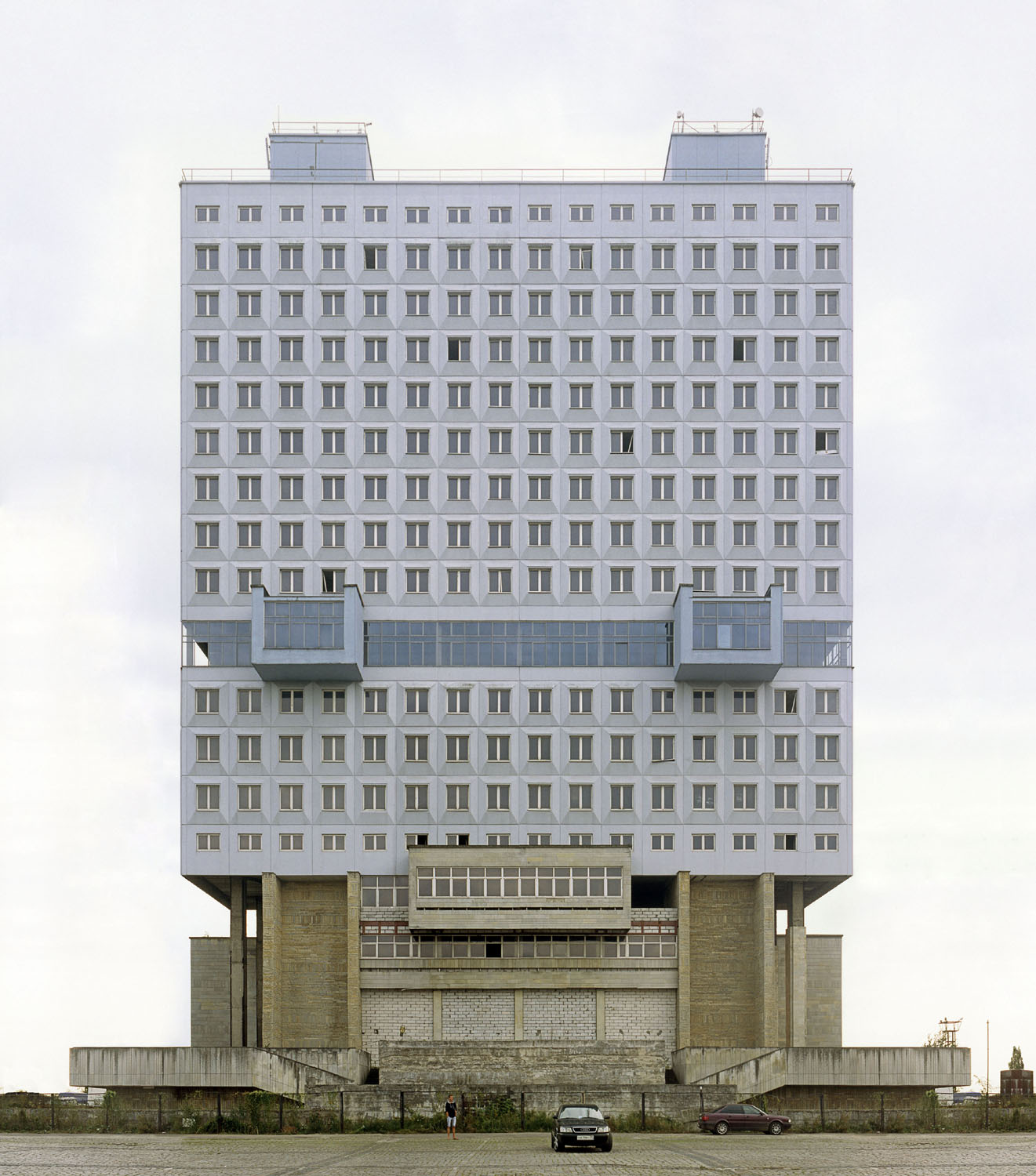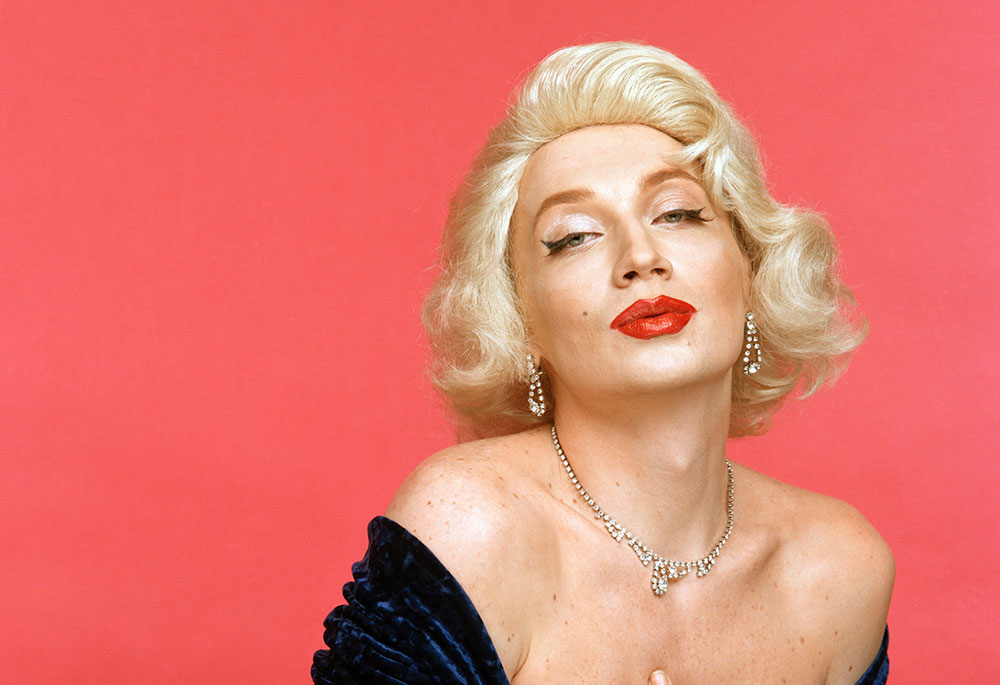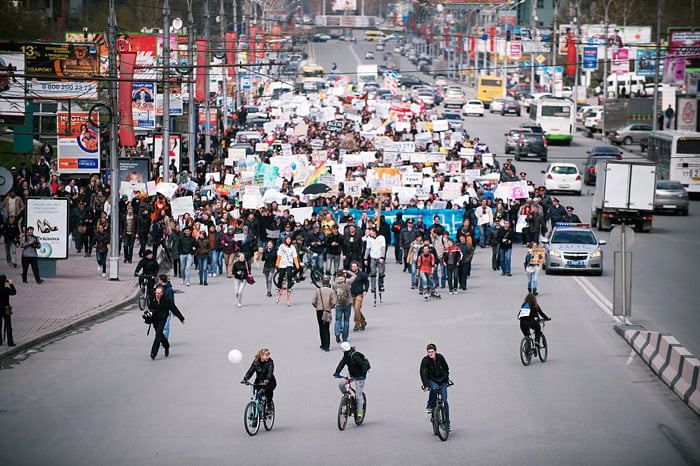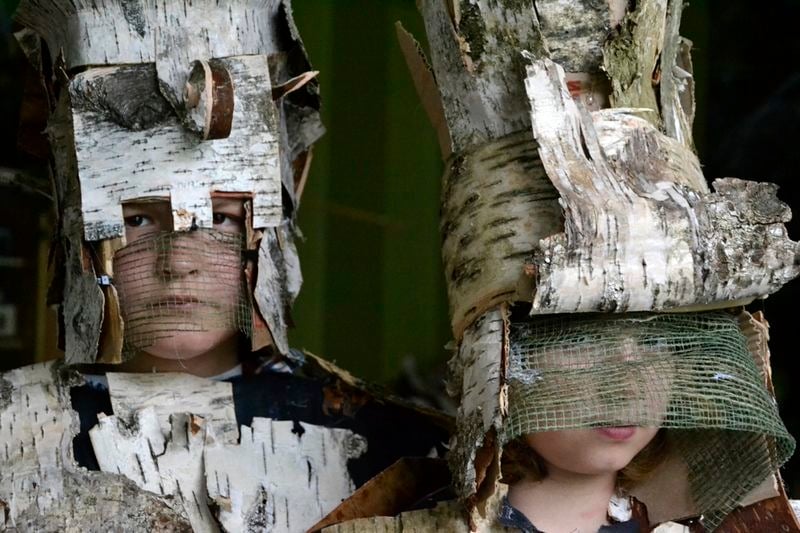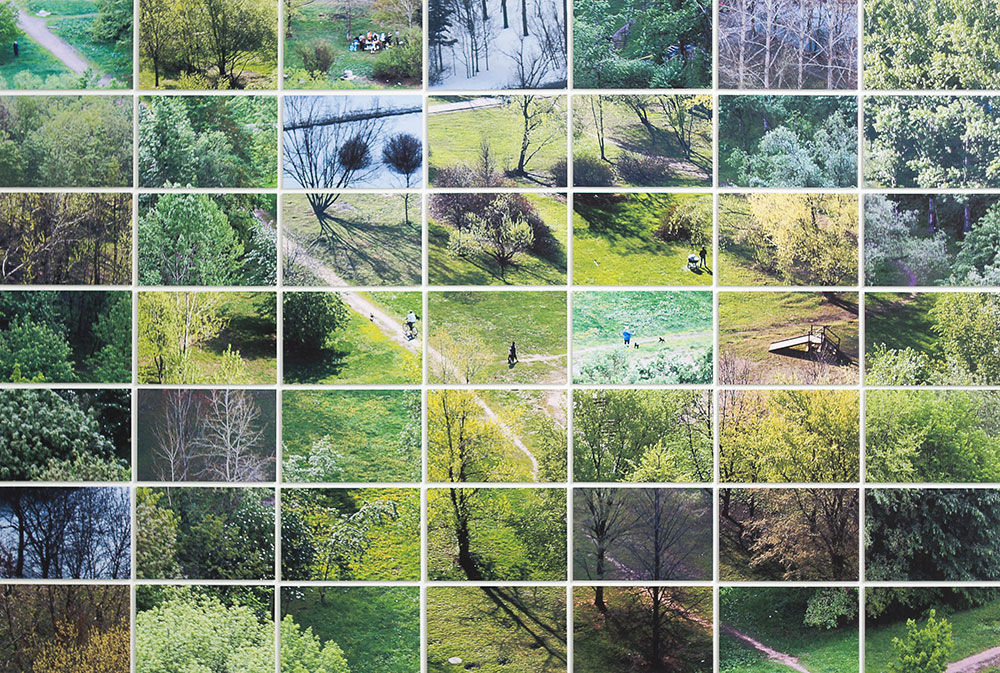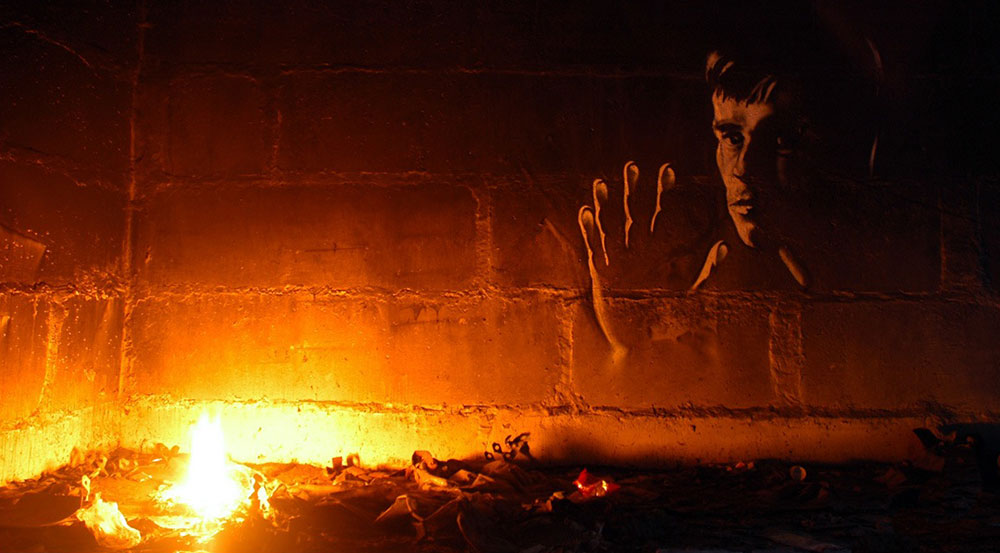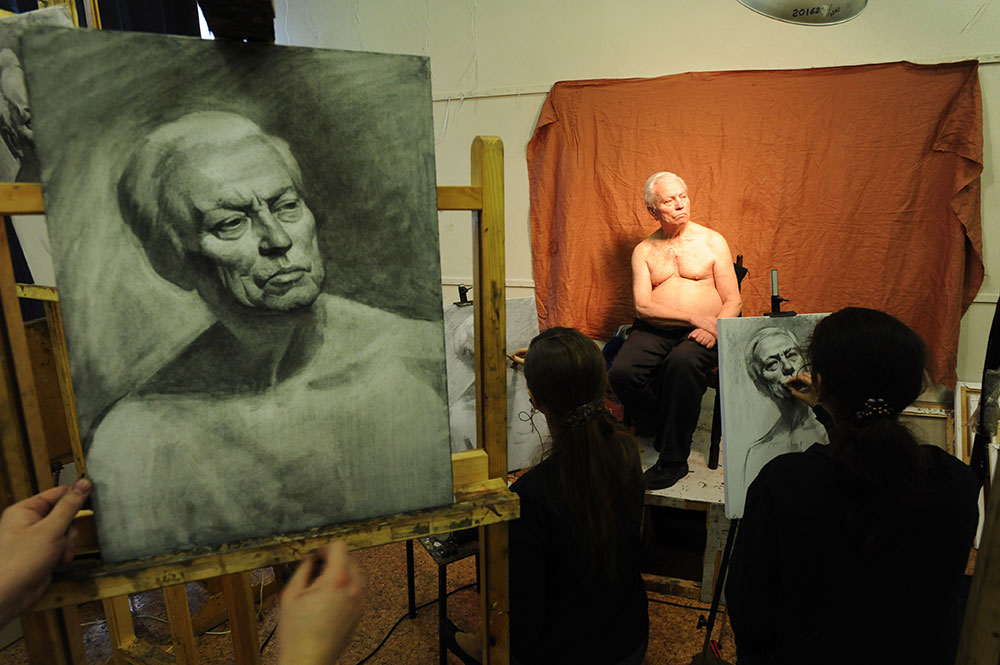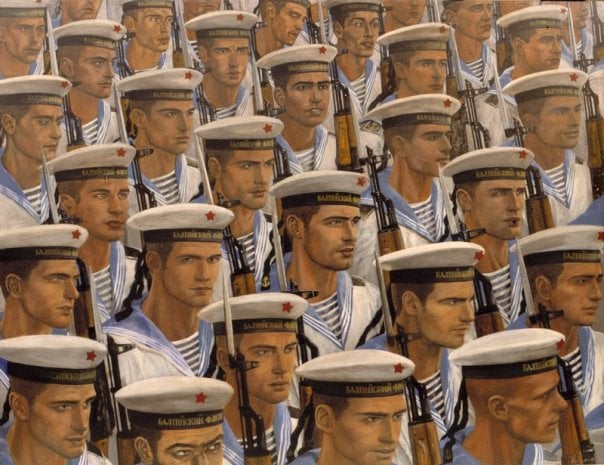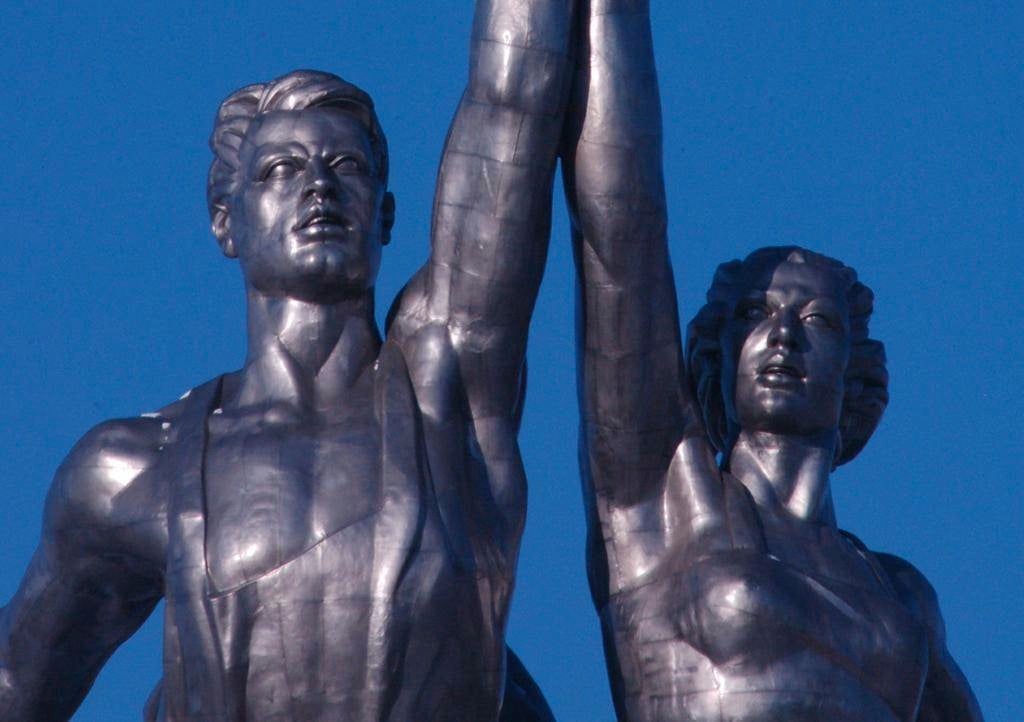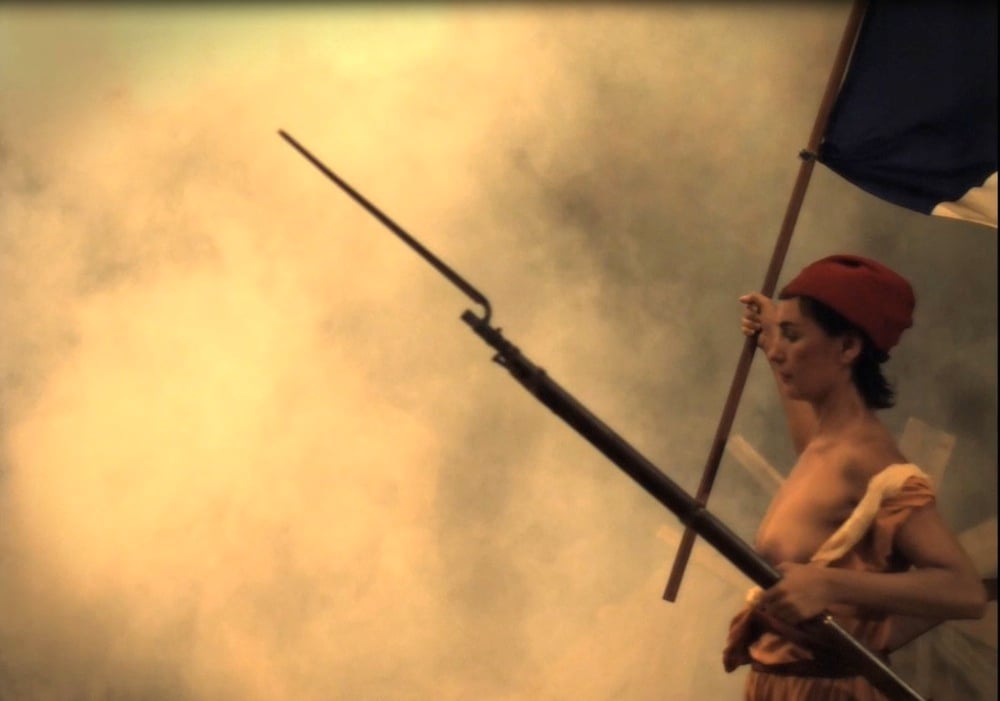Past future perfect: the dream worlds of artist Pavel Pepperstein
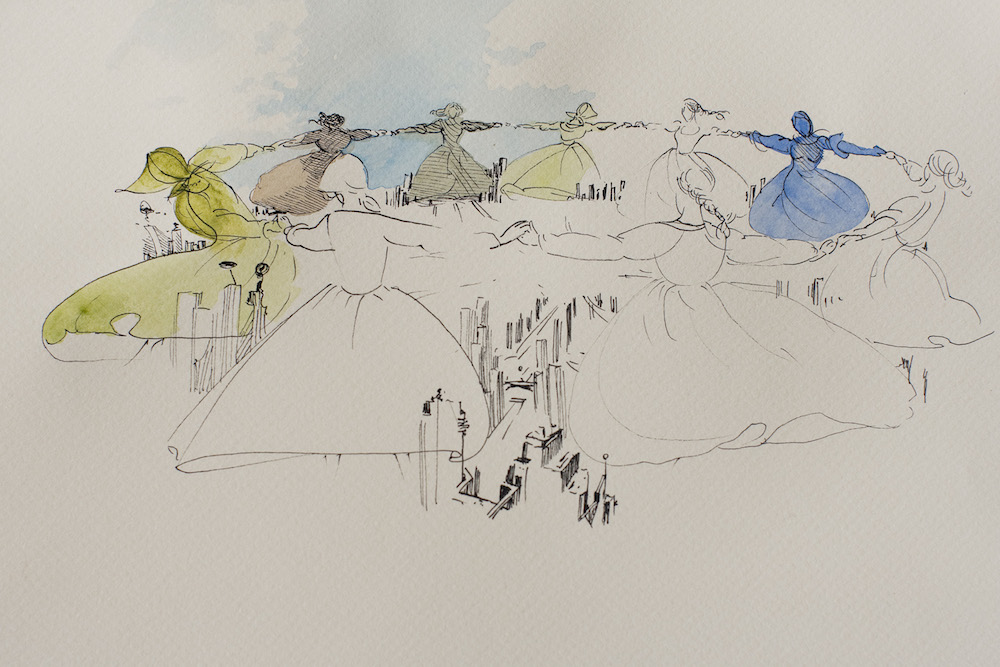
Borrowing from the worlds of both visual art and literature, Muscovite artist Pavel Pepperstein’s newest work looks at the cultural and political mess of the present. The result are idiosyncratic watercolours filled with surreal images and wordplay
Pavel Pepperstein is notoriously difficult to get hold of. Not only does he eschew email and Skype, two forms of contact considered rudimentary by 21st-century standards, but he has for years lived a nomadic life, wandering between Moscow, Europe and, until very recently, Crimea. Being a self-styled outsider, however, hasn’t stopped him from amassing an impressive portfolio of work spanning more than two decades, the most recent of which is currently on view at two solo exhibitions in London and Moscow.
A series of vibrant watercolours and paintings at London’s Pace Gallery contain recurring motifs that are typical of Pepperstein’s practice. However, if past works demonstrate an interest in constructing fantastical futurologies, the new series focuses on the cultural and political mess of the present. Debris of the Future explores the idea that the remnants of the past — in this case, suprematist forms — acquire a new material reality in contemporary culture. “Suprematism itself is a thing of the past, and it is one of the quintessential ‘debris of the future’ — it is rooted in the past but looks straight to the future,” says Pepperstein. “I was interested in the destiny of the ‘supreme’ today. It’s not just a culturally vested interest but also a political and environmental one.”
A near constant feature of the artist’s visual vocabulary, the “supreme” here takes on human form or becomes an instrument in the ideological battle between east and west. In The Language of the Future (2013), these elements literally spew out of the mouth of two sinister characters who wouldn’t look out of place in a film noir cartoon or comic strip. Meanwhile, the two paintings in the diptych The Rider and The Supreme and The Supreme of Navigation (both 2013) are diagonally bisected into flat colour fields of white and navy, symbolising the defeat of a land civilisation (Russia) by a maritime one (the west).
Given his distinguished artistic pedigree, it is no surprise that Pepperstein’s prolific creative output borrows directly from the worlds of both visual art and literature, and fuses them into a markedly idiosyncratic signature style filled with surreal images and wordplay. Son of a prominent Moscow Conceptualist, Viktor Pivovarov, and a children’s book author, Irina Pivovarova, Pepperstein (a pseudonym) grew up in a tight-knit artistic circle in which he forged strong personal-professional relationships, most notably with Ilya Kabakov.
Pepperstein first came to public attention as a member of Inspection Medical Hermeneutics (IMH), a collective that he co-founded in 1987 with fellow artists Sergei Anufriev and Yuri Leiderman. Their work, in the form of installations, performances and literary publications, experimented with language and meaning. It was set against the political backdrop of perestroika, the moment when Russian culture was beginning to open up to western influence. Despite the group’s official sounding name, IMH created a coquettish visual and literary language spun from an intricate tangle of Russian fairytales, western visual culture, philosophy, psychedelia and science fiction. Its liberal sampling of these and other sources was facilitated by the context of 1980s Russia, as Pepperstein recalls, a period when “intellectual discourse was totally independent. We felt a total freedom of expression”.
“Suprematism itself is a thing of the past, and it is one of the quintessential ‘debris of the future’ — it is rooted in the past but looks straight to the future”
Beyond IMH’s collective practice, Pepperstein continues the self-imposed task of deactivating our most loaded cultural signs. Although he also writes rap music and is the author of popular novels, outside of Russia Pepperstein remains best known for his colourful and witty annotated watercolours that take, as their inspiration, the political posters produced by the poet Vladimir Mayakovsky and other members of the Russian avant-garde in the early years of the Soviet Union. In Pepperstein’s hands, though, this form is transformed into “a meditative practice, an attempt to understand what kinds of worlds appear in the interstices between word and image”.
In Pepperstein’s imaginary world, one that he brands as “psychedelic realism”, everything is fair game. Cultural insignia — from national flags and symbols of world religions, to western Pop Art and Russian folktales — float freely and occupy a non-hierarchical field of reference. “By its very nature, trash mixes with other trash. If, in a non-trash environment, a pair of patent shoes can never mix with a piece of shit, they can easily co-exist in a rubbish dump,” he says. “In the same way, other pieces of visually redundant material — comic books, children’s book illustrations, and so on — mix together and create this new, recycled reality.” (In life, like in art, Pepperstein prefers metaphor and analogy to straight talk). So, national flags are given a floral makeover in the dreamlike series Political Hallucinations (2002), while Landscapes of the Future (2006-2007) — an addition to the series was created specially for the Russian Pavilion at the 2009 Venice Biennale — draws heavily on the utopian aesthetics of the Russian historical avant-garde and of the space age optimism of the 1960s.
It is tempting to read these and other works as whimsical flights of fancy and mere provocation. How else to interpret, for example, a project for a new urban centre between Moscow and St Petersburg? In City of Russia (2007), Pepperstein proposes to construct a new capital and charts the evolution of this future city, replete with Kandinsky and Malevich skyscrapers, houses with human heads, and a “sculpture-building” with the enticing name “Russian Babushka”.
However, the quirky sense of humour belies a hidden seriousness. The utopias that he paints are far from realisable. Instead he projects “a feeling of utopia, or a wish for utopia”, but one that isn’t limited to his native Russia. “The version of the future that was offered by Malevich, Lissitzky and others was deeply integrated into the Russian context,” says Pepperstein. “The 1917 Russian Revolution was followed by the firm belief in a new world and new opportunities. There is a similar rise in utopian thinking now, but in the west. The current state of affairs is reminiscent of Russia during the 1920s — its utopianism and a blind belief in one’s own possibilities. This will, of course, end in disaster.”
“It’s not easy to find intellectual freedom so it necessitates a switch to a more childlike language of raw emotion on which it becomes harder to exert an outside influence”
This paradoxical ambivalence — at once critical and meditative — acts as a common thread through the work and is palpable in Holy Politics, currently on show at Moscow’s Regina Gallery, which “attempts to take a child’s, or even a fairytale, view of political reality,” according to the artist. To be sure, the majority of Pepperstein’s work displays a childlike innocence or naiveté. Yet, it is a consciously political stance, as the artist is keen to state. “Intellectual reflexivity is still important, but it’s difficult to ensure a non-biased sphere in which to practice it,” he says. “Today, it’s not easy to find intellectual freedom so it necessitates a switch to a more naive, childlike language of raw emotion on which it becomes harder to exert an outside influence or control.” In the new series, there is little that escapes being turned into a target for criticism. Little pink wooden huts fly through the air and the figure of God metamorphoses into an atomic mushroom cloud. A giant bear-like claw destroys a modern metropolis in Fucking Civilisation (2013), while the painting Jews of all the World! (2013) depicts a Noah’s Ark of animals, sporting Stars of David and begging to be saved from the figures of two Nazi officers — humankind.
He is also quick to point a finger at the crippling self-belief of the international artworld. For Pepperstein, it is yet another form of institutional censorship, one that positions itself under the banner of political correctness. Given Russia’s headlong rush to become a free market economy following the collapse of the Soviet Union in 1991, it comes as no surprise then that Pepperstein places hope in the work of those artists who are simultaneously critical of the government and remain firmly outside the corporate bureaucracy of the gallery system. He admires the provocative performances of Pussy Riot and the St Petersburg radical art collective Voina, but believes that the focus of their criticism is “limited in scope … When they find themselves in an American prison, their work will have a stronger international impact and will carry a deeper meaning”.
Back in Russia, Pepperstein is keeping himself busy. He and his friend Natasha Nord are currently working on a feature film, which reads like a dictionary of Hollywood stylistic paradigms — blood, guts, sex, violence, espionage, exotic locales and pretty girls — wrapped in a home-made, DIY aesthetic. Another opportunity to see his work will present itself during the upcoming iteration of Manifesta, the nomadic biennale which will take place in St Petersburg over the summer. Although he is reluctant to forecast the effect the much-disputed biennale will have on the Russian public’s attitude to contemporary art, we can be relatively sure that whatever Pepperstein chooses to exhibit will result in more than just a few laughs and raised eyebrows.
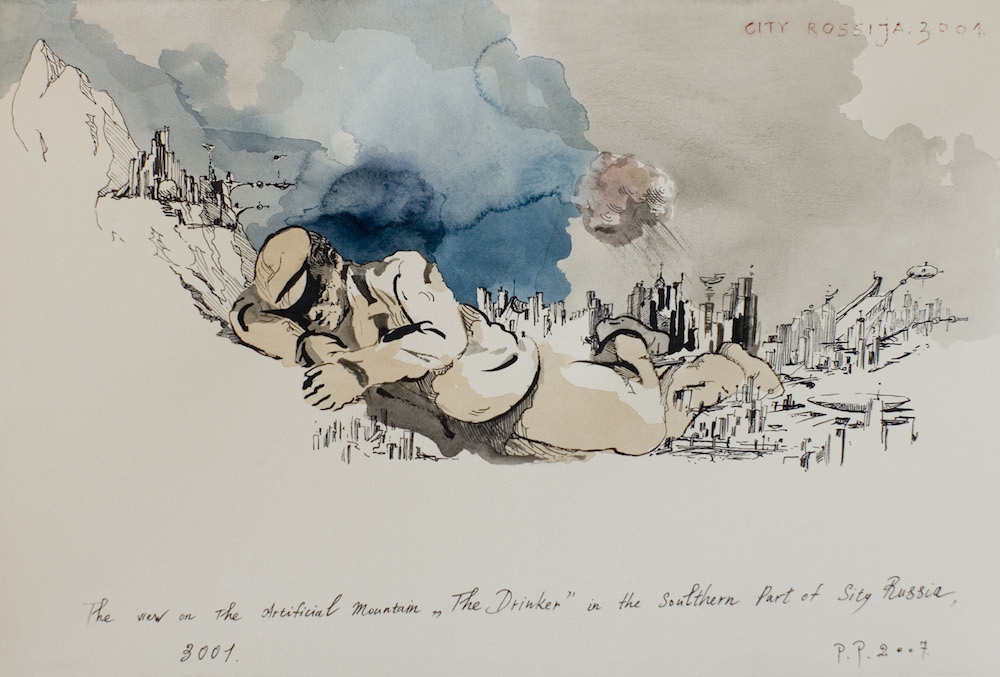
_37x27.5__Indian_Ink_and_watercolor_on_paper_2007.jpg)

_67x102_Indian_Ink_and_watercolor_on_paper_2007.jpg)
